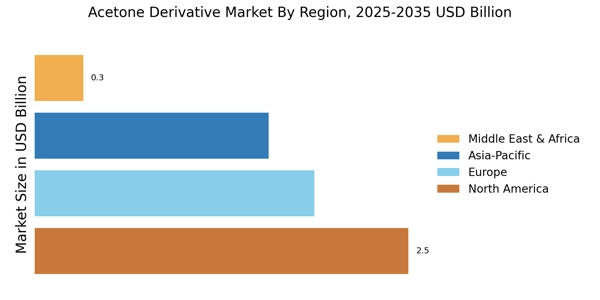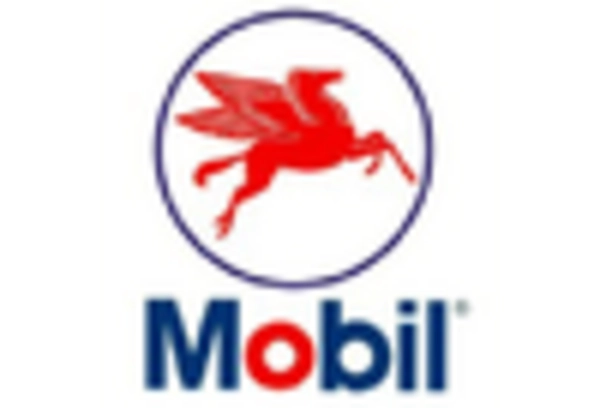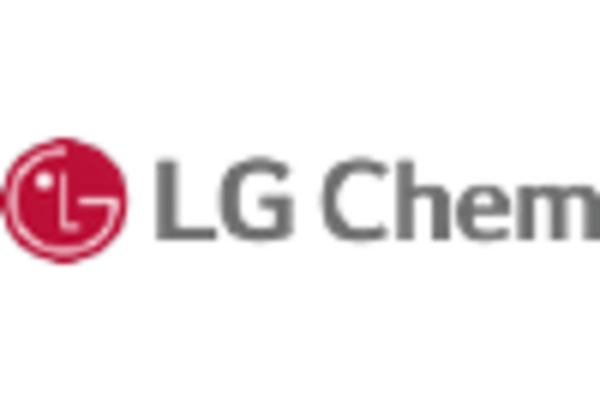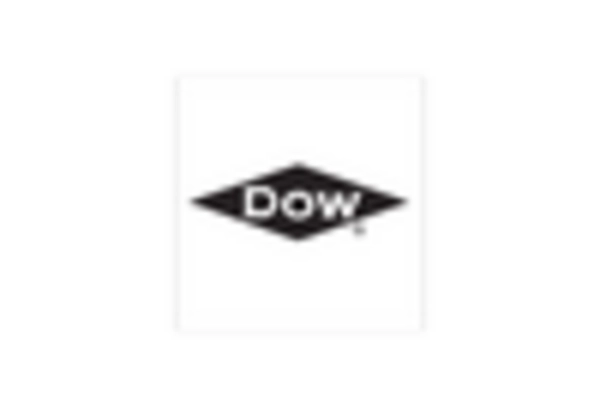Rising Demand in Pharmaceuticals
The Acetone Derivative Market is experiencing a notable increase in demand from the pharmaceutical sector. Acetone derivatives are utilized as solvents and intermediates in the synthesis of various pharmaceutical compounds. The market for acetone derivatives in pharmaceuticals is projected to grow at a compound annual growth rate (CAGR) of approximately 5% over the next few years. This growth is driven by the increasing need for effective drug formulations and the expansion of the pharmaceutical industry. As new drugs are developed, the reliance on acetone derivatives for their production is likely to intensify, thereby bolstering the overall market. Furthermore, the trend towards more efficient and sustainable manufacturing processes in pharmaceuticals may further enhance the role of acetone derivatives, making them indispensable in the industry.
Growth in Industrial Applications
The Acetone Derivative Market is benefiting from the growth in various industrial applications. Acetone derivatives are widely used as solvents in coatings, adhesives, and plastics, which are essential components in numerous manufacturing processes. The industrial sector is anticipated to expand, with a projected growth rate of around 4% annually. This growth is likely to increase the demand for acetone derivatives, as industries seek efficient and effective solutions for their production needs. Moreover, the trend towards lightweight materials in automotive and aerospace applications may further enhance the utilization of acetone derivatives, as they provide desirable properties such as strength and durability. Consequently, the industrial applications of acetone derivatives are expected to play a crucial role in the overall development of the Acetone Derivative Market.
Expansion in Personal Care Products
The Acetone Derivative Market is witnessing a surge in the use of acetone derivatives in personal care products. These compounds serve as solvents and stabilizers in various formulations, including nail polish removers, skin care products, and hair care items. The personal care sector is projected to grow significantly, with an estimated market value reaching over 500 billion dollars by 2026. This expansion is likely to drive the demand for acetone derivatives, as manufacturers seek effective and safe ingredients. Additionally, the increasing consumer preference for high-quality personal care products may lead to a greater reliance on acetone derivatives, further solidifying their position in the market. As the personal care industry evolves, the role of acetone derivatives is expected to become more prominent, contributing to the overall growth of the Acetone Derivative Market.
Innovations in Chemical Manufacturing
The Acetone Derivative Market is poised for growth due to innovations in chemical manufacturing processes. Advances in production technologies, such as more efficient catalytic processes and greener synthesis methods, are likely to enhance the yield and reduce the environmental impact of acetone derivatives. These innovations may lead to a more competitive market landscape, as manufacturers strive to meet the increasing demand for sustainable products. Furthermore, the integration of automation and digital technologies in chemical manufacturing could streamline operations, resulting in cost savings and improved product quality. As these innovations continue to evolve, they are expected to significantly influence the Acetone Derivative Market, potentially leading to new applications and increased market penetration.
Regulatory Support for Sustainable Practices
The Acetone Derivative Market is likely to benefit from regulatory support aimed at promoting sustainable practices. Governments and regulatory bodies are increasingly implementing policies that encourage the use of environmentally friendly chemicals and processes. This trend is expected to drive the demand for acetone derivatives that meet stringent environmental standards. As industries adapt to these regulations, the market for acetone derivatives that are produced through sustainable methods may expand. Additionally, the emphasis on reducing carbon footprints and enhancing product safety could lead to innovations in the production of acetone derivatives, further solidifying their role in various applications. Consequently, regulatory support is anticipated to play a pivotal role in shaping the future of the Acetone Derivative Market.


















Leave a Comment